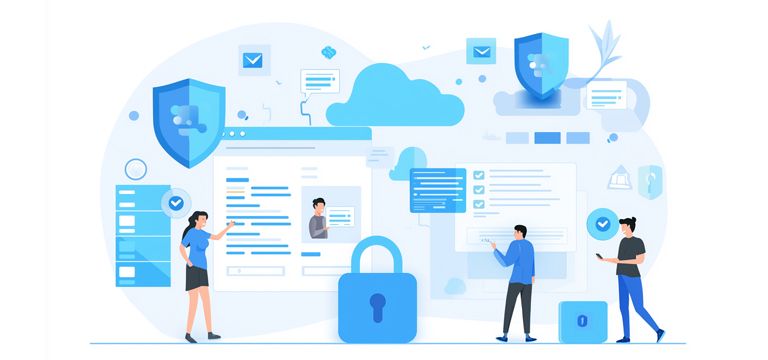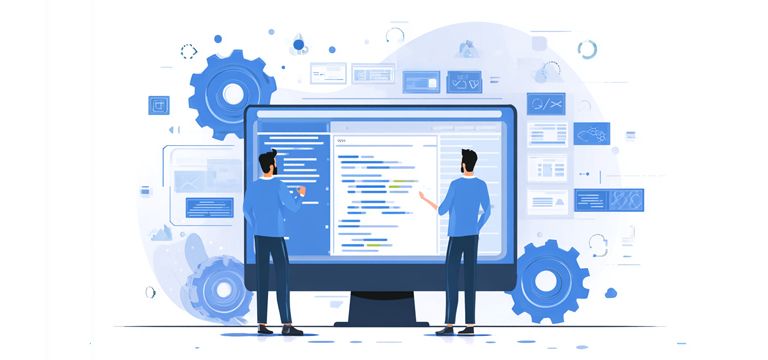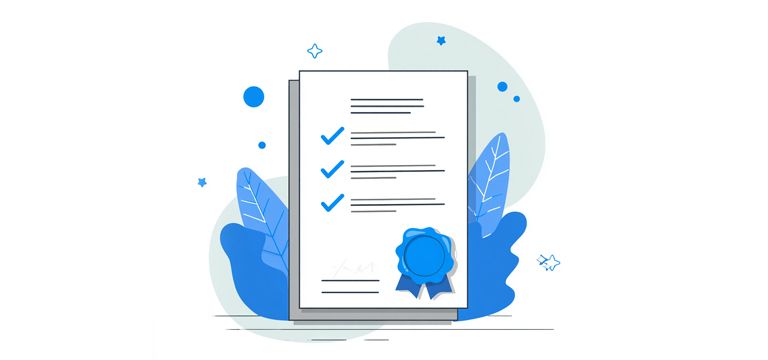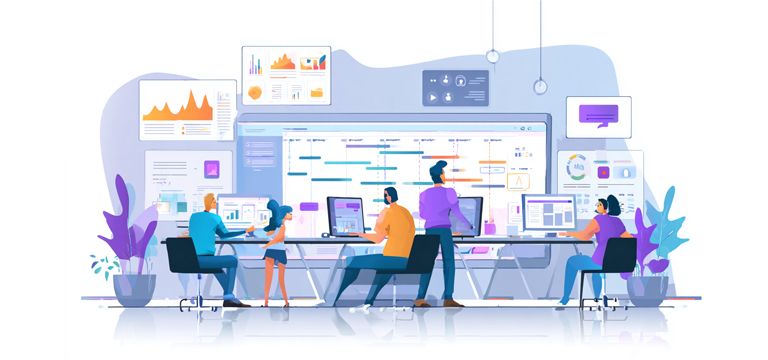Support
Onboarding &
Process
A structured process that takes you from handoff to ongoing support. Learn how we onboard, what to expect, and how our monthly operations rhythm keeps your software running smoothly.
Seamless transitions, ongoing excellence.
Our support onboarding process is designed to smoothly transition your application into our care, whether we built it or another team did. We systematically document your system, set up monitoring, establish communication channels, and create operational runbooks so ongoing support is predictable, transparent, and reliable.
From initial discovery through ongoing monthly operations, we ensure you always know what's happening with your software and that issues are handled quickly, professionally, and proactively.
GET IN TOUCHGET IN TOUCHSupport Onboarding
From handoff to steady-state support
Our structured onboarding process ensures smooth transitions, comprehensive documentation, and reliable ongoing operations from day one.
1. Discovery & Access
Kick-off meeting, access to code repositories, environments, credentials, documentation review, stakeholder interviews, and initial application walkthrough.
2. Codebase & Infrastructure Assessment
Architecture review, dependency audit, security assessment, performance baseline, technical debt inventory, and identification of critical risks.
3. Monitoring & SLO Setup
Implement telemetry, configure alerts, establish Service Level Objectives (SLOs), set up error tracking, and create dashboards for health visibility.
4. Runbook & Communication
Document operational procedures, create incident response playbooks, establish communication channels (Slack, email), and define escalation paths.
5. Ongoing Monthly Operations Rhythm
Regular maintenance windows, monthly health reports, quarterly reviews, continuous monitoring, proactive improvements, and transparent communication.
Onboarding phase (weeks 1-4)
The onboarding phase typically takes 2-4 weeks depending on application complexity. Our goal is to become operational quickly while establishing a solid foundation for long-term support.
Week 1: Discovery
- Kick-off meeting with key stakeholders
- Access setup (repositories, environments, tools)
- Credential handoff and secrets management
- Review existing documentation
- Application walkthrough and demo
- Understand current pain points and priorities

Week 2: Assessment
- Architecture review and dependency mapping
- Security audit (credentials, access, vulnerabilities)
- Performance baseline measurement
- Technical debt identification
- Disaster recovery and backup verification
- Integration and API dependency review

Week 3: Monitoring Setup
- Install Application Performance Monitoring (APM)
- Configure error tracking (Sentry, Bugsnag)
- Set up log aggregation and search
- Define SLOs and error budgets
- Configure intelligent alerting
- Create health dashboards

Week 4: Runbooks & Handoff
- Document operational procedures
- Create incident response playbooks
- Establish communication channels
- Define escalation paths and on-call rotation
- Complete onboarding report with findings
- Transition to ongoing support operations

Monthly operations rhythm
After onboarding, we establish a predictable monthly rhythm that balances proactive maintenance with responsive support.
Week 1: Planning & Prioritization
- Review previous month's metrics and incidents
- Triage backlog items and new requests
- Prioritize maintenance tasks
- Plan scheduled maintenance windows
- Coordinate with your team on priorities

Weeks 2-3: Execution
- Deploy security patches and updates
- Fix bugs and issues
- Implement improvements
- Run performance optimizations
- Respond to incidents as they arise

Week 4: Reporting & Review
- Compile monthly health report
- Document work completed
- Summarize metrics (uptime, performance, incidents)
- Provide recommendations for next month
- Optional: Monthly sync call to review report

Continuous: 24×7 Monitoring
- Real-time monitoring and alerting
- On-call incident response
- Proactive issue detection
- Security vulnerability scanning
- Performance tracking

Service Level Agreements (SLAs)
Our support tiers come with clearly defined SLAs so you know exactly what response times to expect based on issue severity.
| Severity | Description | Resolution Target |
|---|---|---|
| Critical (P0) | Complete outage, data loss, security breach | 4 hours |
| High (P1) | Major feature broken, significant user impact | 24 hours |
| Medium (P2) | Minor feature issue, workaround available | 1 week |
| Low (P3) | Enhancement request, cosmetic issue | Next release |
Response time varies by support tier: Tier 1 (6 hour response), Tier 2 (3 hour response), and Tier 3 (custom SLA options). Resolution target means fix deployed to production. Within each tier, we prioritize issues by severity as shown above.
Communication & reporting
Real-time communication
- Slack Channel: Dedicated channel for day-to-day communication
- Email: Formal communication and monthly reports
- Incident Alerts: Automated alerts for critical issues
- Status Updates: Regular updates during incident resolution
Regular reporting
- Monthly Health Reports: Metrics, work completed, recommendations
- Quarterly Reviews: Strategic planning and roadmap alignment
- Incident Post-Mortems: Root cause analysis and prevention
- On-Demand Reports: Available anytime via dashboard access
Why our process works
Structured but flexible
We have a proven process, but we adapt it to your needs. If you have existing monitoring tools, we work with them. If you need faster onboarding, we prioritize critical paths. The structure ensures nothing falls through the cracks while remaining practical.
Transparent and predictable
You always know what's happening. Monthly reports, defined SLAs, clear communication channels, and regular reviews mean no surprises. We document everything so you're never dependent on one person's knowledge.
Proactive, not reactive
24×7 monitoring catches issues before they become incidents. Regular maintenance prevents problems from accumulating. Our monthly rhythm ensures continuous improvement, not just firefighting.
Proven at any scale
We've onboarded everything from small SaaS apps to complex enterprise systems. Our process scales: startups get fast onboarding and focused support, enterprises get comprehensive documentation and coordinated operations.
Frequently asked questions
Common questions about our support onboarding and ongoing operations process.
Most onboarding cycles run 2-4 weeks, depending on system complexity and how quickly we can get access and context. Simpler, well-documented applications can be fully onboarded in a couple of weeks; complex, poorly documented, or highly regulated systems may require more time for discovery, hardening, and documentation.
We typically need access to code repositories, environments (dev, staging, production), monitoring and logging tools, and key stakeholders who can provide business context. Existing documentation is helpful but not mandatory; when documentation is missing, we create it as part of onboarding so future support is easier and less person-dependent.
We avoid abrupt cutovers. Where possible, we overlap with the outgoing team, set up monitoring and backups early, and start by stabilizing and documenting before making larger changes. High-risk areas are identified up front so everyone understands where we will tread carefully during the support transition.
You get a clear view into both operations and work in progress: shared dashboards for uptime, error rates, and performance, plus a visible support board that shows what is in triage, in progress, and completed. Communication happens in agreed channels (such as Slack and email) with direct access to the engineers working on your system, not just a generic support alias.
From day one we are on call for critical issues. Early in onboarding we focus on fast stabilization: triage, mitigation, and restoring service, followed by deeper root-cause analysis once the immediate fire is out. As we learn the system, our response gets faster and more targeted, but you are never left without coverage for high-severity incidents.
All monitoring setups, runbooks, documentation, and operational knowledge we create belong to you. If you decide to transition to an internal team, we coordinate a structured handover and training so they inherit a well-documented, observable system rather than a black box. We design our process to avoid lock-in and make future transitions easier, not harder.
Software support onboarding is the structured process of transitioning responsibility for your application into a dedicated support team. Done well, it replaces informal knowledge with shared documentation, sets up monitoring and SLAs, and establishes clear communication paths, so support is predictable, transparent, and not dependent on a single person or vendor.
A Service Level Agreement (SLA) defines target response and resolution times for different severities of issues. In support onboarding, we align SLAs to your business impact levels so everyone understands how quickly critical outages, major bugs, and minor issues will be addressed. Clear SLAs give you confidence in the level of protection you are getting from your support investment.
Related Services
Software Support
Manage IT risks before they hurt your business. We keep your product secure, up to date, and running smoothly, so you can focus on your business.
VIEW DETAILSVIEW DETAILSProduct Strategy
A successful product starts with a clear strategy. We help you shape ideas into a plan that balances user needs, business goals, and technical feasibility for success.
VIEW DETAILSVIEW DETAILS